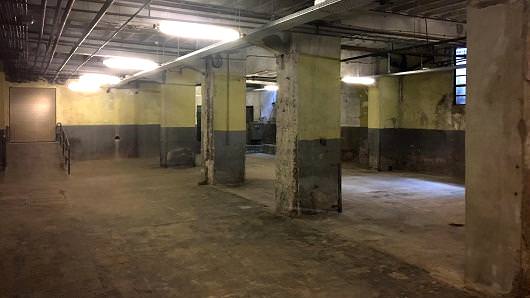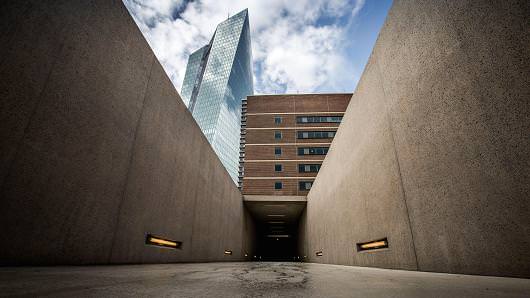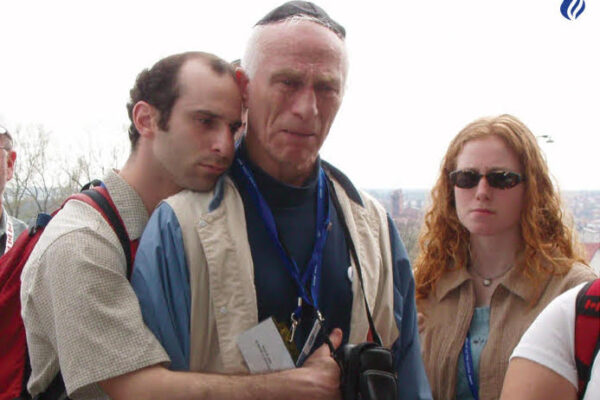FRANKFURT – The European Central Bank’s new headquarters towers over the Main River in Frankfurt, a gleaming symbol of modern Europe. At its base stands a searing reminder of the continent’s dark history.
Below the newly built skyscraper, a concrete ramp stretches down into a dark basement. Ten-thousand Jews awaited expulsion to concentration camps from the room between 1941 and 1945.
Men, women and children filed from the basement to the nearby railroad tracks, boarding trains with nothing except deep uncertainty about their future. Others watched the trains pass from a footbridge, many bidding goodbye to loved ones for the last time.

Elizabeth Schulze | CNBC Thousands of Jews were held in this basement, now part of a memorial at the ECB in Frankfurt, before they were deported to concentration camps.
Today, the basement, railroad tracks, footbridge and surrounding area are preserved as part of a memorial that lies on both public land and the ECB premises. The memorial carries powerful memories of the Holocaust near the offices of some of Europe’s top policymakers.
“A memorial on the east side of the building has been built to remind us, and those who come after us, of deeds that cannot and must never be forgotten,” ECB President Mario Draghi said during the inauguration of the new premises in March 2015.
The ECB chose the site of the Grossmarkthalle, or wholesale market hall, as the location for its new headquarters in 2001. Construction was completed in 2014. The design maintained the original appearance of the Grossmartkhalle building, which was used to sell fruits and vegetables across the region for most of the 20th century. The red brick exterior contrasts with the glossy windows of the adjacent towers.

Frank Rumpenhorst | AFP | Getty Images A concrete path at the former site of a train ramp, from where Jews were deported. The basement of the former market hall served as accumulation point, from where more than 10,000 Jewish citizens from Frankfurt were transported between 1941 and 1945 to concentration and extermination camps.
The ECB collaborated with the City of Frankfurt am Main and Jewish Community Frankfurt to incorporate a memorial that would represent a dark period in the history of the Grossmarkthalle. Architects Tobias Katz and Marcus Kaiser won an international competition to design the memorial with their plans to include haunting descriptions of the deportations engraved throughout the site.
“I don’t know what lies before me. Maybe that’s good,” reads one quotation inside the cellar.
Katz said many people in Frankfurt were not aware that the Grossmarkthalle served as an assembly point for Jews before they were deported. Their design aimed to draw attention to the deportations while preserving the original space, including the basement, parts of the railroad tracks, a signal box and a footbridge.
“It was very important for us to make it visible,” he said. “Now we can see people walking at the market hall or ECB and see them discovering these quotations and starting to think.”
Originally Published HERE








